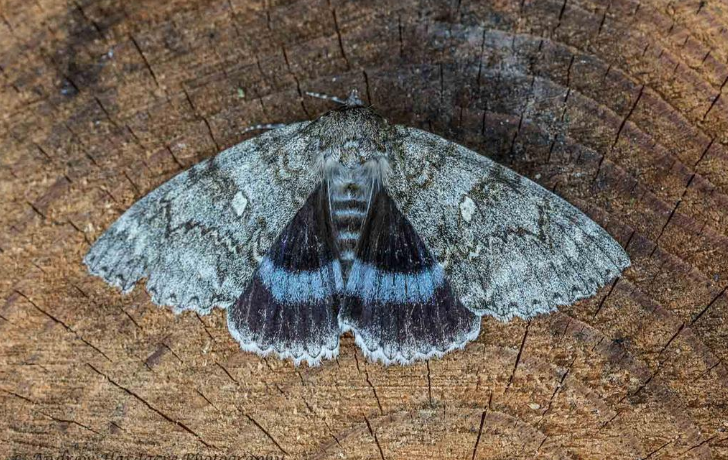Marvellous moths
Most of us are familiar with the daytime delights of butterflies. But their (mostly) nocturnal cousins, the moths, also come in a range of beautiful colours and patterns, and are the unsung, often unseen, heroes of the countryside.
Moths play important roles in our ecosystems. First, they are champion pollinators. Recent research shows that they pollinate a much broader range of flowers than those selected by bees, butterflies and hoverflies.
Then of course the caterpillars and adult moths are vital food for birds and bats, but also amphibians, hedgehogs and spiders.
What makes a moth?
What’s the difference between a butterfly and a moth? Generally speaking, you would expect to see butterflies during the day and moths at night. But there are plenty of day-flying moths, too, such as the hummingbird hawk-moth and clearwing moths. In fact, there are more moth species that fly during the daytime here than there are UK species of butterflies! One of the main differences between British butterflies and moths is that the former have ‘clubbed’ antennae. The only moths we see here that have antennae ending in a broad club are the burnets, which are also day-flying.
Unique and unusual
While we have 59 species of butterfly in the UK, there are an incredible 2,500 moth species here! They have fascinating names like Ghost Moth, Maiden’s Blush, and True Lover’s Knot.
There are two main groups of moths in our countryside. Micro moths can be extremely tiny: the smallest we get here has a wingspan of about 3 millimetres. Macro moths tend to be bigger although there are, confusingly, some which are smaller than the biggest micro moths!
Some moths are brightly coloured to ward off predators. The lunar hornet moth looks like an actual hornet, which is enough to make any hungry bird think twice! Others try to blend in with their background. There are moths that look like bird droppings, twigs, or lichen. The well-hidden peppered moths actually changed its wing colouring in response to the Industrial Revolution! For a while they were much darker to be better camouflaged against soot-covered trees or walls. Some are still dark but you’ll mostly see the lighter version now as the levels of air pollution have dropped.
Five fascinating moths
Here are five moths that I find particularly interesting.
Mother Shipton moth
The Mother Shipton moth has a pattern on its wings that’s said to look like the legendary Knaresborough prophetess, Ursula Shipton.

Hummingbird Hawkmoth
The Hummingbird Hawkmoth is often mistaken for a hummingbird as it hovers over its favourite food plants like Red Valerian and Jasmine. You’re most likely to see this moth between June and September.

Clifden nonpareil
One of our biggest moths is the Clifden nonpareil: it has a wingspan of nearly 12cm! It is extremely rare and was thought to have been lost from our countryside for 40 years, but has been returning in growing numbers since 2000.

Privet hawk-moth
The privet hawk-moth can also have a wingspan up to 12cm. As its name suggests, one of this moth’s caterpillars main food sources is privet.

Water veneer moth
The water veneer moth is unusual in that its caterpillars develop beneath the surface of ponds and rivers, feeding on pondweed. Also, some female water veneer moths are wingless and live underwater, while others have wings like the males do!

Moth traps
I’ve been trying out moth trapping to see which species are visiting our garden at night. It’s a simple set-up – a 20 watt bulb which draws moths in. They then settle beneath it in a box filled with egg boxes, under which they can crawl for shelter and safety. I leave the trap out overnight – not too often as I don’t want to disrupt the moths’ behaviour too much – and check its contents in the morning before letting the moths go. So far my favourite garden moth is the Heart and Dart, which gets its name from the patterns on its wings.
You can make your own simple moth trap using a white sheet and a torch or lamp. Simply hang the sheet, stretched out, from a branch, or washing line. When it’s dark, shine light on to the sheet and see which moths gather on it!
How to help moths
Butterfly Conservation advise that many moths need plants that gardeners might consider as weeds. Their caterpillars will only eat very specific plants that they’ve evolved alongside. Trees and shrubs that help feed hungry caterpillars include: birch, hawthorn, privet and willow. Plants include: bedstraws, dandelion, dog rose, hop, honeysuckle, nettles and plantains.









